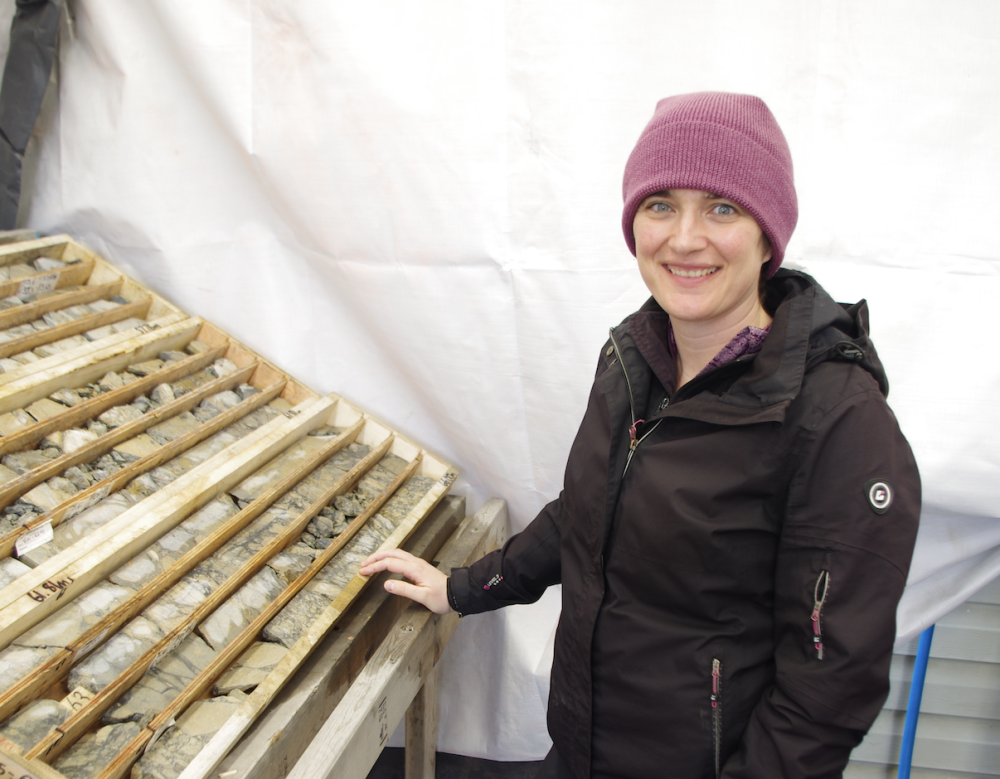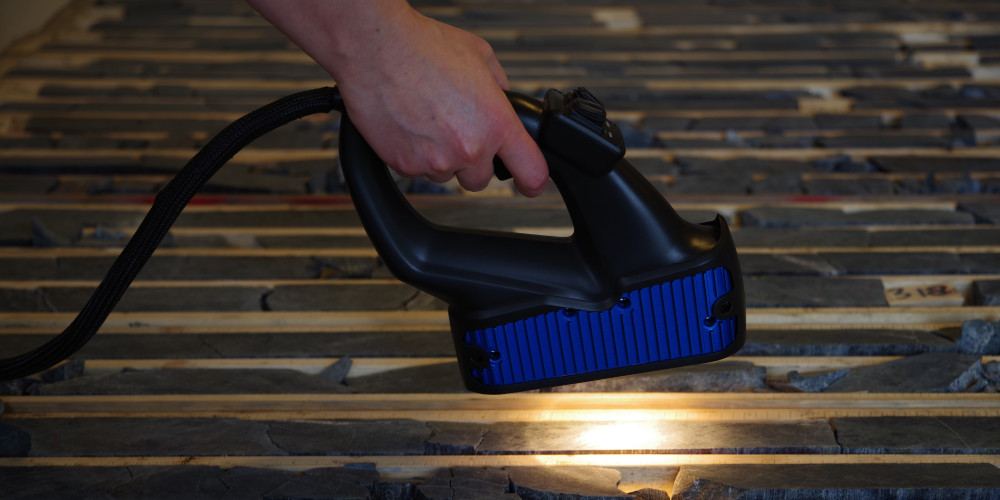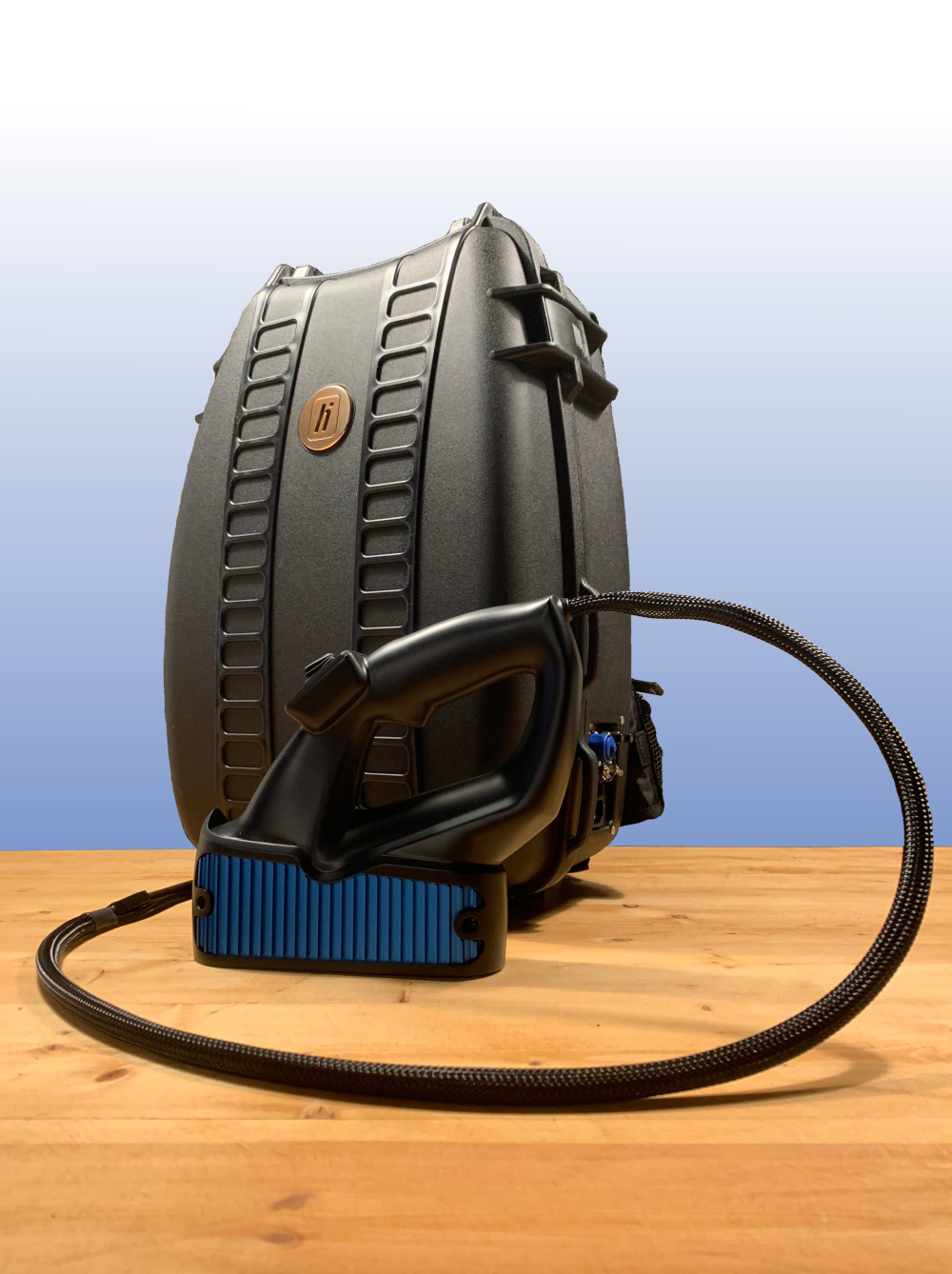Seeing rocks clearly with cloud power and no bias this portable tech could finally retire the eyeball from mineral exploration and core logging duty


, , , , , , , , , , , , , , , ,
, ,
, , , , , ,
When it comes to identifying rocks in mineral exploration and mining projects, the human eye remains the industry’s most widely used tool, despite its limitations, but for Dr Michelle Tappert, co-founder of Hyperspectral Intelligence Inc. (HII), that’s a problem holding the sector back.
“Project failure remains common in our sector, and much of that is still rooted in subjective, eye-based logging,” Michelle explains to The Rock Wrangler. “It’s time we rethink how we collect and interpret compositional information from rocks.”
Founded on the principle that fast, accurate, and objective rock composition data should be accessible in the core shed and not just in laboratories, HII is pushing the boundaries with its proprietary LithotypeTM Method and compact, hyperspectral rock scanning equipment.
As Michelle puts it, “We’re not just replacing visual logging. We’re empowering geologists with tools that dramatically improve data quality, decision-making and operational efficiency.”

Why point spectrometers beat hyperspectral cameras
HII equipment uses hyperspectral sensors, but not the typical hyperspectral imaging cameras that most large systems employ. Instead, HII uses VNIR and SWIR point spectrometers that have been configured to operate in non-contact and continuous collection mode, meaning that around 300 high-quality spectra are collected per metre in under a minute.
“Each spectrum we collect has a very high signal-to-noise ratio,” Michelle explains. “This means that our technology can analyse all rock types, including mafic and ultramafic rocks, or other rocks that might be labelled as ‘aspectral’ by other systems.”
“Overall, we believe it's better to collect a few hundred excellent spectra per metre than thousands of noisy ones.”
The company’s decision to favour point spectrometers over imaging cameras was intentional. Michelle says point spectrometers offer significant advantages. They are more affordable and compact, which contributes to the end users’ commercial viability and portability goals.
The data produced is of higher quality, and because point spectrometers don’t generate massive volumes of data, the company can deliver rapid turnaround for customers.

Two systems, one platform
HII currently offers two main devices: the geoLOGr® and the Hyperspectral Handheld Scanner, known as the HHSTM. The geoLOGr® combines a shortwave infrared spectrometer with a high-resolution digital line-scan camera. The scan head is mounted on an extendable frame, and the geoLOGr® can be used on roller tables or laid flat for scanning drill core or other samples. The HHSTM, on the other hand, is a more compact tool weighing around 8 kilograms. It is manually swept across rock surfaces and is ideal for use in tight, remote, or mobile environments. Both systems are cloud-connected and link directly to HII’s proprietary data processing engine.
To ensure that every collected spectrum is used to its full potential, HII developed the LithotypeTM Method, which is at the heart of HII’s innovation. It is a departure from the conventional approach of matching collected spectra to static reference libraries. These traditional libraries are often based on idealised specimens collected from museums or lab-prepared samples and tend to fall short when applied to rocks associated with mineral exploration and mining projects.
“Library-based methods can work for epithermal or porphyry copper systems, where rock reflectivity is high and mineralogical variation is moderate,” Michelle says. “But they perform poorly when applied to intermediate, mafic or ultramafic rocks, where diagnostic spectral signals are more subtle.”
Rather than rely on these legacy libraries, the LithotypeTM Method builds a project-specific spectral library using actual data collected from a customer’s site. This ensures that outputs reflect real variability in the geology and not idealised templates.
“We’re not trying to fit square pegs into round holes,” Michelle says. “We’re building a spectral framework that is customized and tailored to each customer’s rocks.”
Accuracy is a core strength of this approach. The LithotypeTM Method has demonstrated over 90 percent classification accuracy when validated against independent, lab-acquired multi-element geochemical datasets. These validations are carried out through cross-comparisons between lithotype-defined intervals and zones of consistent chemical composition.
“Our spectral groupings correlate very closely with geochemically distinct rock units,” says Michelle. “That shows we’re not just picking up noise. We’re detecting real, meaningful changes in rock composition, which can be due to changes in lithology, alteration type, or different types of ore mineralization.”
In cases where high-quality geochemical data is provided alongside the hyperspectral scans, HII uses machine learning algorithms to further refine and optimize the hyperspectral model. These tools identify high-dimensional relationships between spectral data and elemental abundances that may not be visible through traditional spectral analysis alone. Michelle says that linking hyperspectral data with laboratory-based multi-element data can result in accuracy levels above 95 percent in many projects, with models that are simultaneously both sensitive and robust.

One method, many applications
One of the major advantages of the HII platform is its versatility. Michelle says that the tools are effective on any rock type, in any sample form, and at any stage of the mining value chain. The systems have been used on drill core, RC chips, crushed samples, coarse and fine rejects, pulps, and even smelter feed. HII’s solutions have been deployed across projects in early and advanced exploration, mine development, mine operation, metallurgy, and project closure.
In practice, Michelle sees the greatest uptake during early-stage exploration, where the company’s technology helps clients identify rocks quickly and confidently, and during mine operations, where real-time decisions can influence throughput and grade control.
“Understanding what rocks you have and how they behave underpins almost every decision in mining,” she says. “Our tools help make that understanding faster and more accurate.”
Replacing subjectivity with spectral consistency
Beyond the numbers, Michelle believes the greatest value of HII’s solutions lay in their ability to eliminate human error and inconsistency.
“Geologists are good at pattern recognition, but we’re not machines. Our eyes get tired, and we all see things a little differently,” she says. “Subjectivity has always been the Achilles’ heel of rock logging. We’re offering ways to remove that variability.”
Michelle points to a number of specific applications where HII’s technology has delivered strong outcomes. These include automating lithological logging, defining domains, rapidly and objectively logging RC chips, identifying near misses in exploration drilling, detecting mineralogical indicators of gold, and creating digital twins for record-keeping and audit purposes. “These are all things you just can’t do quickly or reliably with the naked eye,” she adds.
Resistance and roadblocks in the field
Despite these benefits, Michelle is candid about the occasional resistance her team encounters on site. While the instruments are lightweight and easy to use, the requirement for clean and dry samples can sometimes be an issue. More often, though, resistance is cultural.
“Sometimes you’ll have people on the ground who are just not interested in changing how they’ve always logged rocks,” she says. “Or consultants who don’t want their interpretations challenged. Or a company that has already filed its reports and isn’t looking to revisit its models.”
Still, momentum is building. One particularly exciting area for HII is RC chip scanning. The company has developed a patent-pending tray system that enables chips to be distributed for scanning and then returned to their original trays. This could transform how chip trays are logged, particularly in parts of the world where RC drilling dominates early-stage exploration.
“It’s already working well, and it opens up a whole new use case for our systems,” Michelle says.
Moving toward a new standard
Looking ahead, Michelle believes hyperspectral scanning is on the cusp of becoming a standardised tool across the mineral exploration and mining industry. While roughly 30 service providers operate globally, many still rely on bulky, expensive systems that are difficult to scale. HII’s focus on miniaturisation, usability, and accuracy positions it to play a leading role in mainstream adoption.
“We’re closing the gap between field geologist and lab scientist,” Michelle says. “This is about giving people better tools to make faster, more confident decisions. If we can help them reduce timelines, lower costs, and find ore more efficiently, then we’ve done our job.”
